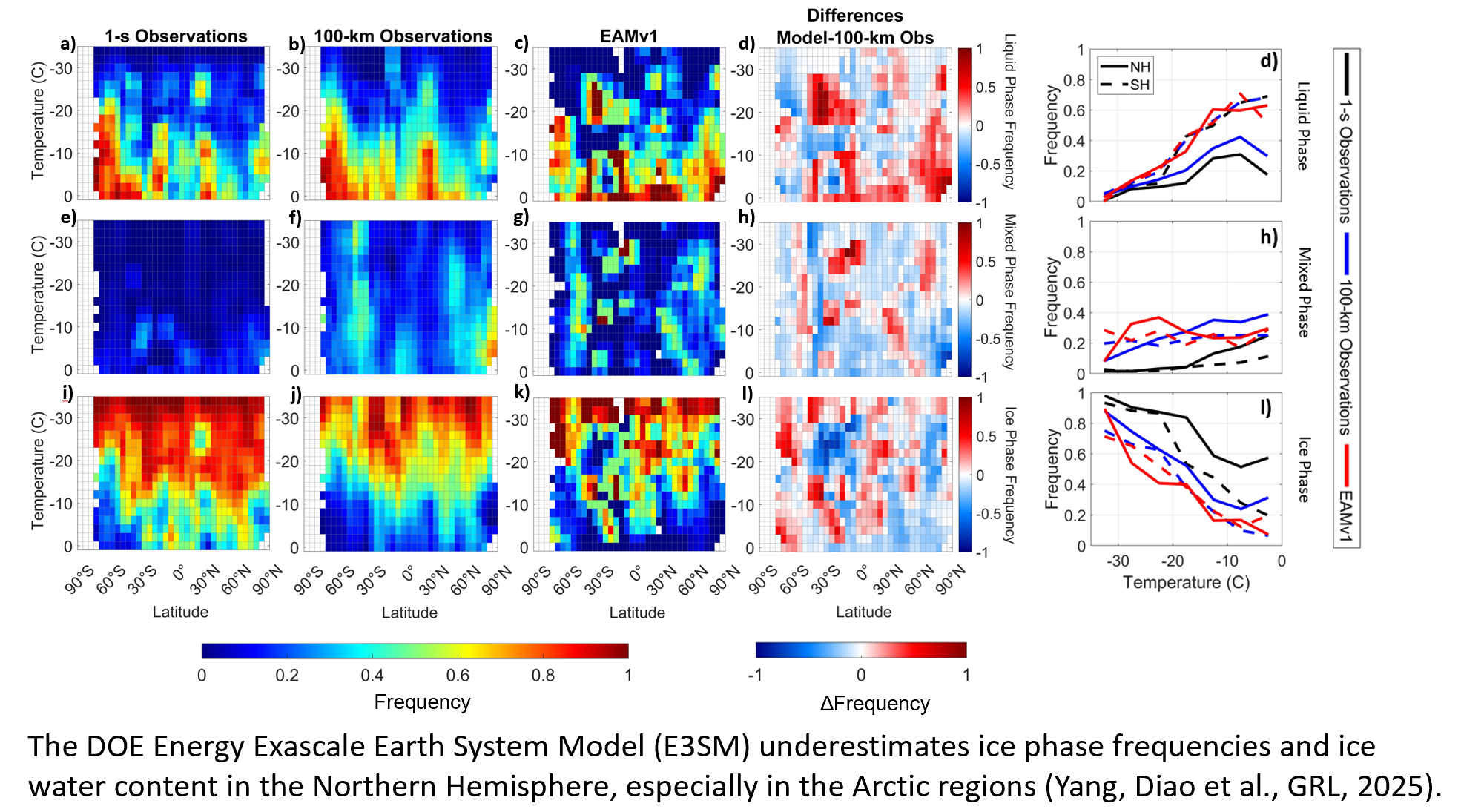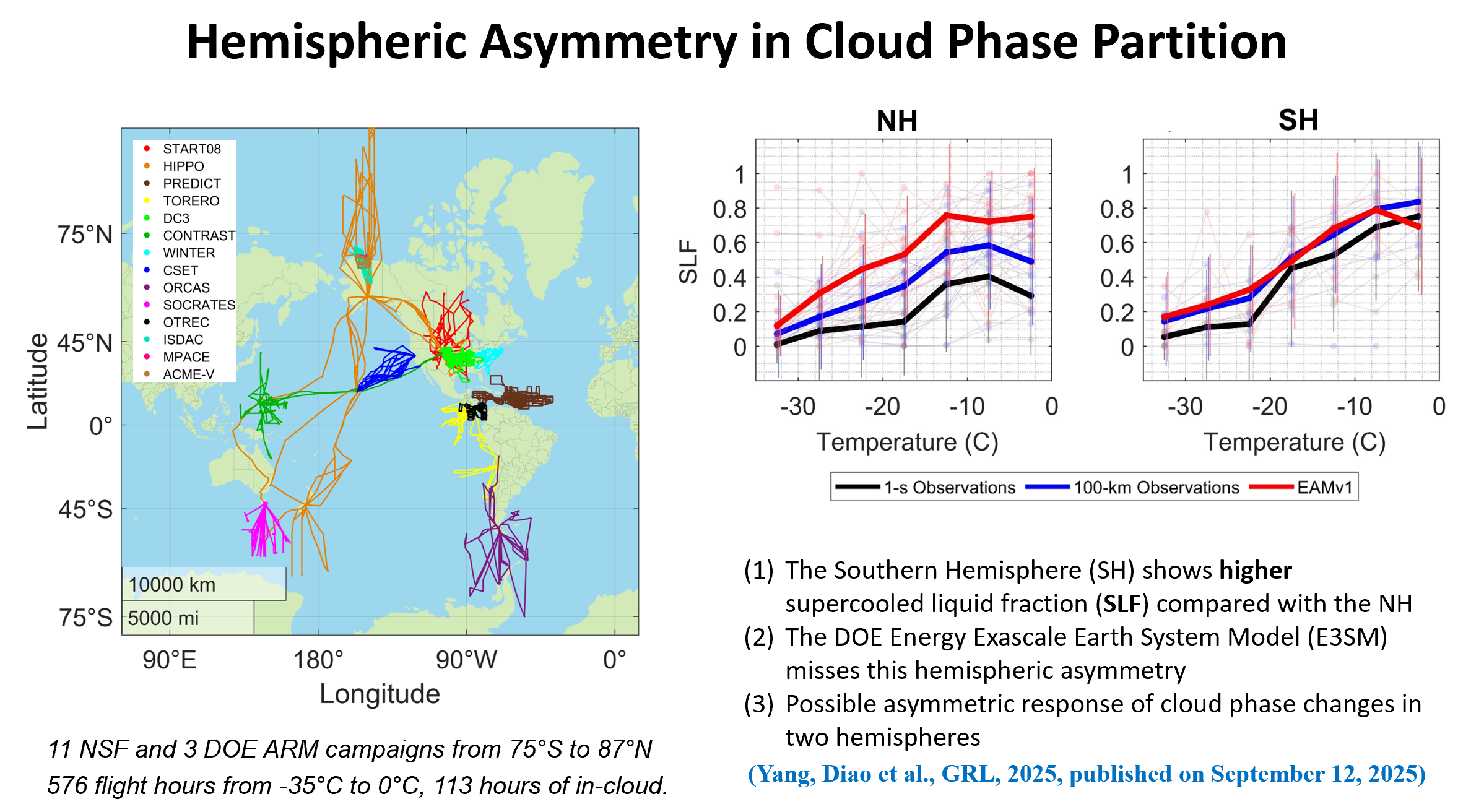Hemispheric Asymmetry in Cloud Phase Partition
Submitter
Diao, Minghui — San Jose State University
Area of Research
Cloud Distributions/Characterizations
Journal Reference
Yang C, M Diao, Y Shi, and X Liu. 2025. "Hemispheric Asymmetry of Phase Partition in Mixed‐Phase Clouds Based on Near Global‐Scale Airborne Observations." Geophysical Research Letters, 52(18), e2025GL115946, 10.1029/2025GL115946.
Science

Evaluation of the DOE E3SM model revealed model underestimations of ice phase frequencies in the Northern Hemisphere

Hemispheric asymmetry of cloud phase partition based on 3 DOE ARM and 11 NSF flight campaigns
New research reveals a fundamental imbalance in the composition of mixed-phase clouds between Earth's two hemispheres. Using U.S. Department of Energy (DOE) Atmospheric Radiation Measurement (ARM) User Facility and National Science Foundation airborne observations from 75°S to 87°N, clouds in the Southern Ocean were found to contain significantly higher occurrence frequencies and mass fractions of supercooled liquid water than their northern counterparts. These findings imply an asymmetric response of clouds to a changing Earth's system in the two hemispheres.
Impact
A critical finding is that a leading earth system model—the DOE Energy Exascale Earth System Model (E3SM)—fails to capture this real-world pattern of cloud phase distributions. Not only does the model miss the hemispheric asymmetry, but it also underestimates the amount of ice clouds in the Arctic.
These discrepancies suggest that the model simulations may be missing important differences in how warming will unfold in the Northern and Southern Hemispheres.
Summary
The amount of liquid water versus ice in a cloud controls whether it predominantly cools the Earth by reflecting sunlight or warms it by trapping heat. This is especially complicated for mixed-phase clouds, which exist at temperatures below freezing and contain a mixture of both liquid water droplets and ice crystals. By analyzing a large data set from in situ, high-resolution aircraft observations of 14 flight campaigns, this study revealed a crucial fact: there are significant differences in cloud phase partition and microphysical properties between the Northern and Southern Hemispheres. A leading earth system model failed to reproduce this hemispheric asymmetry, especially missing the “icy” nature of clouds in the Arctic. The findings suggest that under a changing Earth’s system, clouds in the two hemispheres may respond in different ways, a complexity that current models may be missing.
Keep up with the Atmospheric Observer
Updates on ARM news, events, and opportunities delivered to your inbox
ARM User Profile
ARM welcomes users from all institutions and nations. A free ARM user account is needed to access ARM data.


















